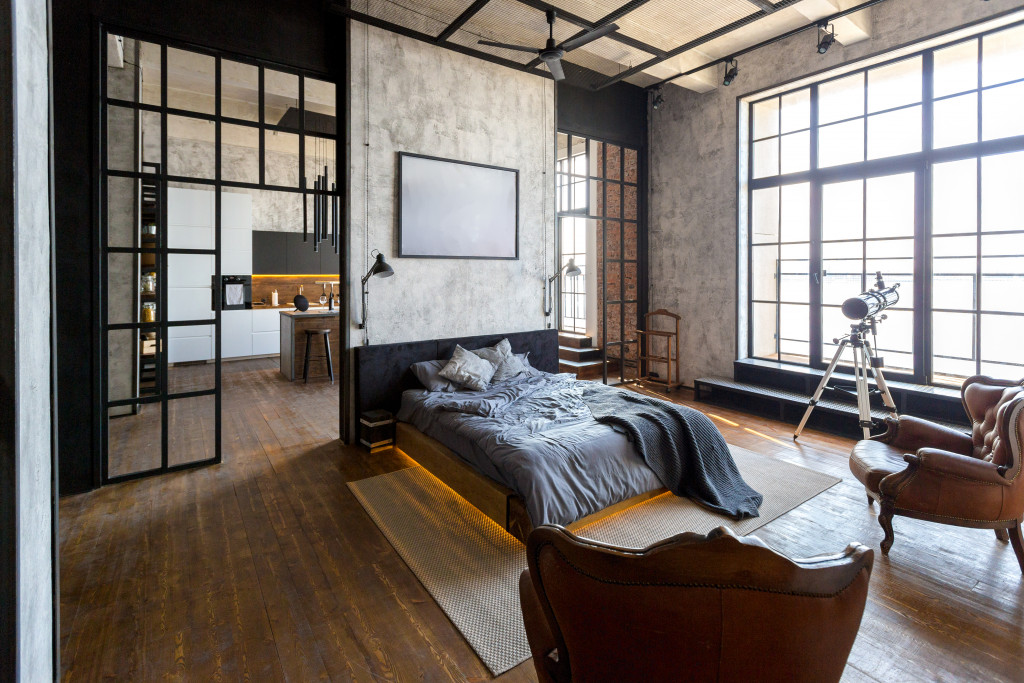Interior design comes in various forms and formulae, some unique and others with just the most minor variations. Nonetheless, each has its taste, finish, and experience in distinct chapters of inspiration, history, and creative effort. Knowing what distinguishes various interior design styles may be more useful than you think, guaranteeing you select the right type for your area and goals and assisting you in achieving aesthetic perfection with a lot less effort.
Modern Architecture
What exactly is Modernism? It is described in architecture as a design language that emphasizes form rather than decoration, structure, and materials rather than picturesque look and the logical and efficient use of space.
Beginning in the 1930s, the modern movement in architecture in the United States thrived. It included distinct design movements that represented modern principles in various ways, such as the International, Expressionist, Brutalist, New Formalist, and Googie movements. Modern architectural practice was defined by technical innovation, experimentation, and rethinking how people lived in the built environment, whether buildings or landscapes.
While the most notable instances of modern architecture in the United States date from the early and mid-twentieth centuries, Modernism continued to influence daily and vernacular design well into the late twentieth century. Among the most well-known Modernist architects are Frank Lloyd Wright, Philip Johnson, Ludwig Mies van der Rohe, Eero Saarinen, and others.
Modern architecture and design describe design methods that include an interest in honoring material, technology, and composition using authenticity, transparency, and efficiency. Modernist art inspired by the previous Modernist movement reinterpreted how we interact with our surroundings and aesthetically pleasing to get a more intimate relationship with the environment.
Rather than simply being a dwelling, the building had become a living machine. In addition, modernist interiors typically include careful organization and the functionality of clean lines and geometry. Intrinsic materiality is a crucial component of the design language, and paying attention to both aesthetic and functional simplicity is equally essential.
You’ll also find tales about modern structures and landscapes here, providing a moving window into locations built or developed in the last 50 years. Many historically and culturally significant sites are susceptible to destruction, neglect, and other hazards since federal, state, and municipal preservation initiatives exclude properties younger than 50 years old from historic designation schemes and review procedures. Fortunately, sites from both the Modernist period and the recent past continue to inspire.
Coastal Style

The Coastal style is as fresh, easygoing, and excitingly flexible as the ocean that inspired it. Seaside provides a refreshing view, fresh mornings, and an overall calm attitude. Still, it also delivers strong winds, continuous humidity, wind-driven rain, periodic floods, and sandy soil to build on. Fortunately for us, besides the high-profile and large-scale coastal initiatives, there are many small-scale, wishful projects.
As a result, your goal of constructing a seaside house may be realized with little difficulty. This design takes a step further instead of just adorning the room with marine materials, patterns, and components. It provides an aesthetic that is holistically sun-kissed and nautical in tone.
Of course, ample natural light is essential, lively bouncing off the contrast of white and blue that distinguishes these spaces. Aqua, teal, turquoise, and other blue hues come to life in the light, organic materials evocative of summer. The option is to go entirely literal with the motif, including anything from seashells, ropes, nautical symbols, driftwood, and even great faux shiplap for maximum visual impact.
Eclectic Style
Eclectic design interiors exemplify uniqueness and independence by being surprising, unexpected, and daring to violate the norms. With no strict rules or intents to constrain it, this style freely borrows from others, harmonizing a wide range of ideas and influences to fit the space and purpose at hand. At its heart, this design style has a lot of variety and layering, which are expertly used to create an overall rhythm that animates the space and keeps it from being completely overpowering.
The eclectic design draws on fundamental design instincts to make sense of the chaos it lives in, creating harmony via color, composition, balance, and materiality. Fabric and texture, in particular, play an essential role in adding variations and layers to the space and aesthetics while maintaining fluidity and coherence.
Having a place that represents who you are on the inside helps you be more stable, enhances your mental health, and gives you a feeling of belonging. In summary, interior design is much more than just creating a visually appealing space. It means accepting yourself and your way of life. It improves our quality of life and the way we go about our daily lives. So, whether you call it classical, traditional, antique, or rustic, contemporary farmhouse interior design—it is all about making you feel at home.


